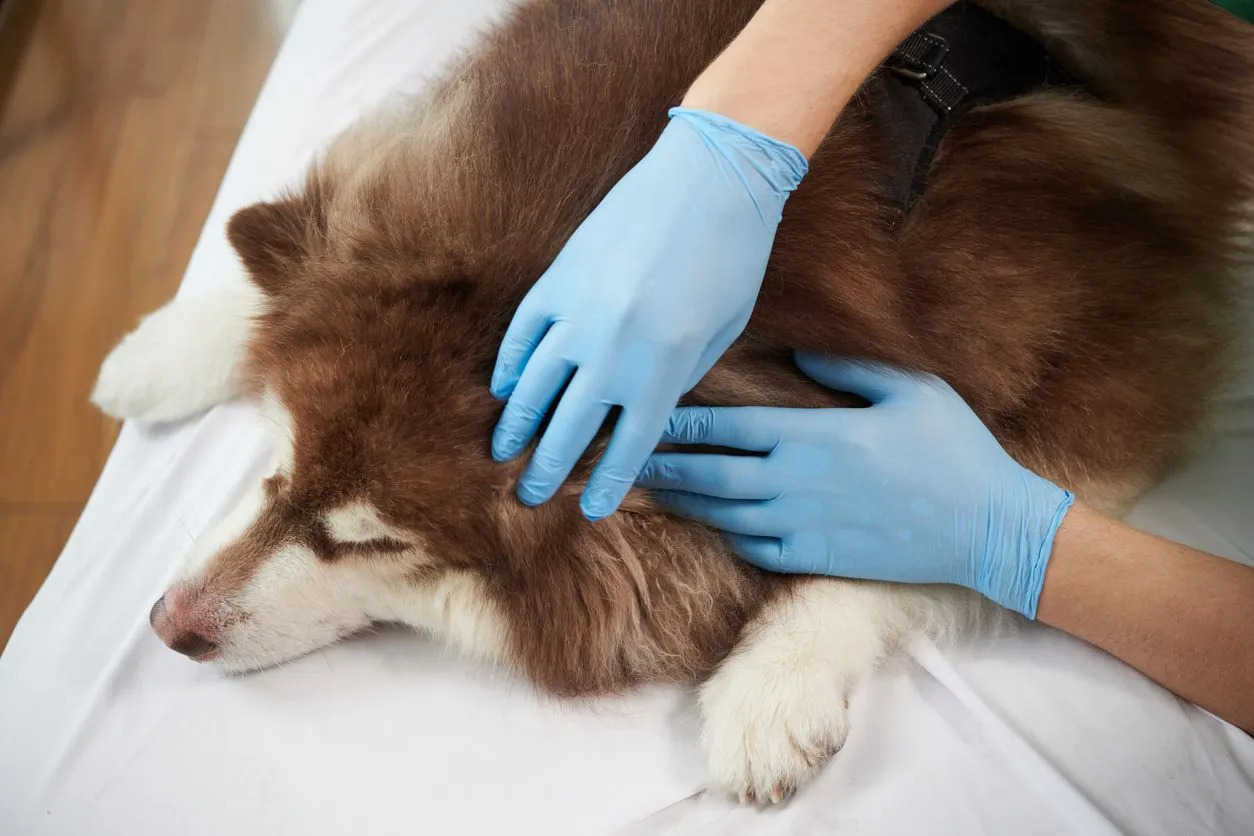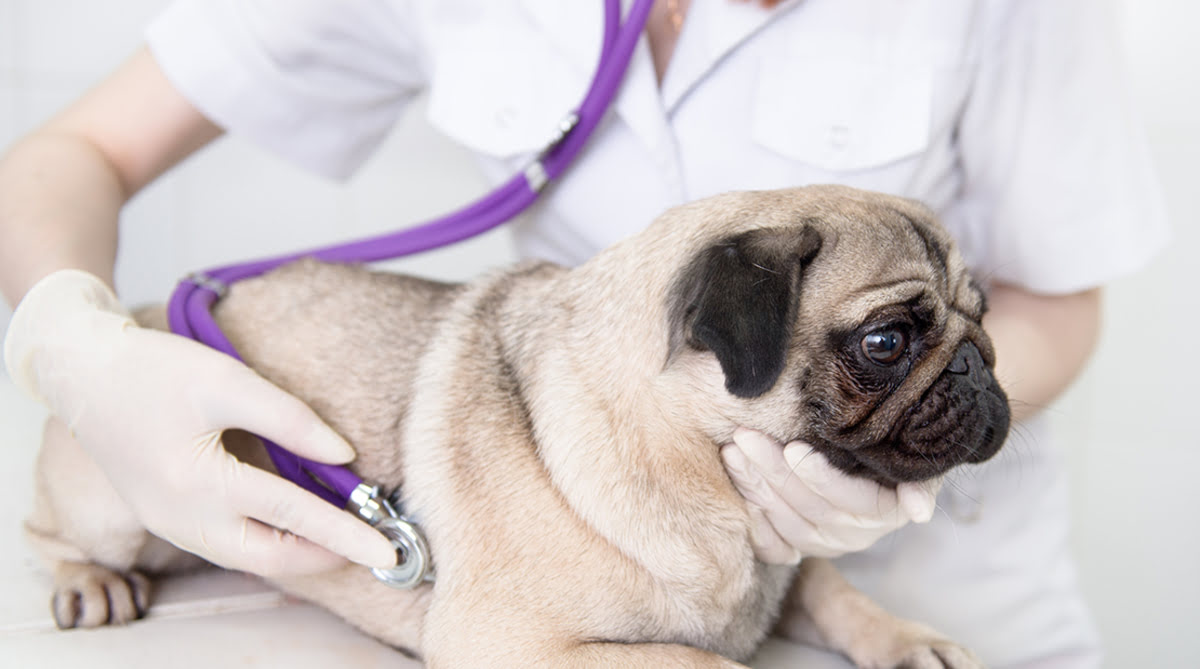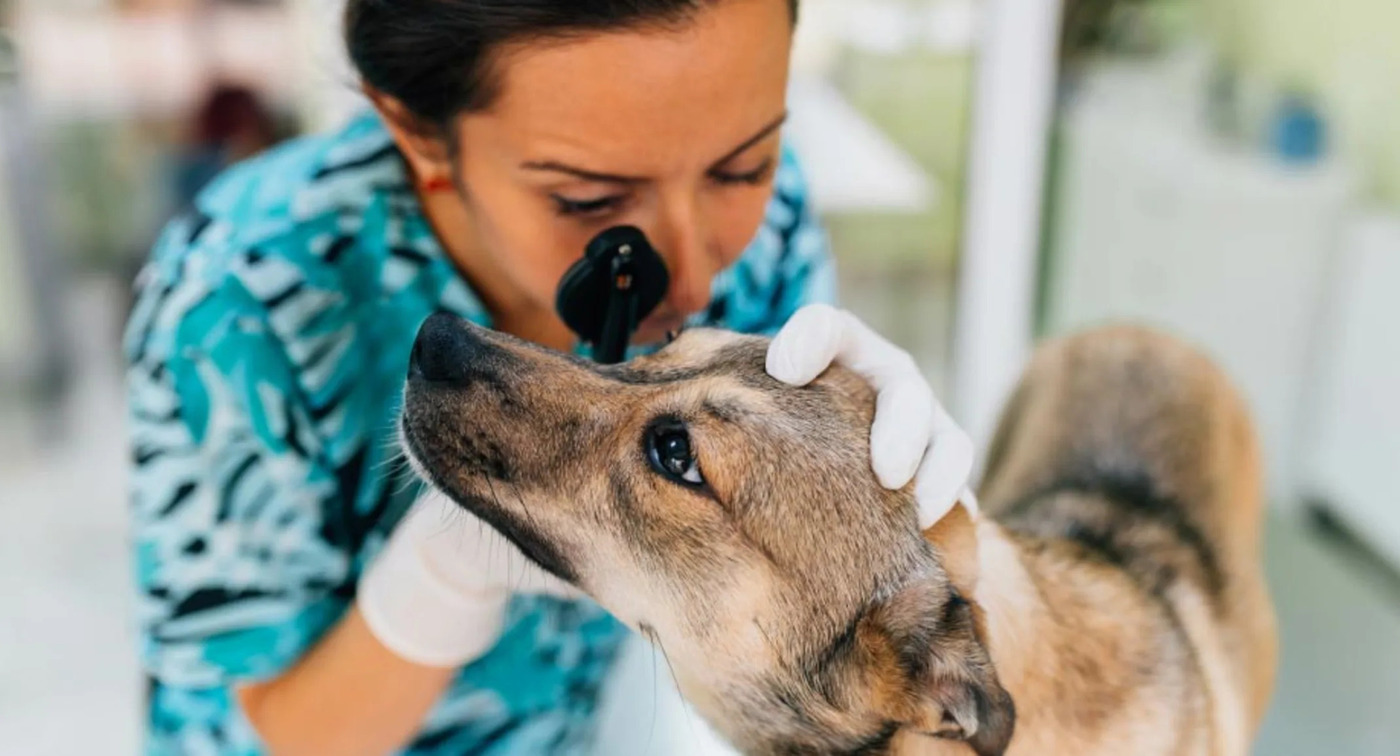Home>Health & Wellness>Common Health Issues>How Long Does My Dog Have If He Has Lymphoma Cancer


Common Health Issues
How Long Does My Dog Have If He Has Lymphoma Cancer
Published: February 5, 2024
Learn about common health issues in dogs, including lymphoma cancer prognosis. Understand how long your dog may have if diagnosed with this condition.
(Many of the links in this article redirect to a specific reviewed product. Your purchase of these products through affiliate links helps to generate commission for Pawsomeoldies.com, at no extra cost. Learn more)
Table of Contents
Understanding Lymphoma Cancer in Dogs
Lymphoma, also known as lymphosarcoma, is one of the most common types of cancer diagnosed in dogs. This malignant cancer originates in the lymphocytes, which are a type of white blood cell that plays a crucial role in the immune system. Lymphoma can affect various organs and tissues in the body, including the lymph nodes, spleen, liver, and bone marrow.
There are several subtypes of lymphoma in dogs, with the most prevalent being multicentric lymphoma, which affects the lymph nodes. Other forms include alimentary lymphoma, which impacts the gastrointestinal tract, and mediastinal lymphoma, which affects the chest cavity.
The exact cause of lymphoma in dogs remains unknown, but certain risk factors, such as genetic predisposition, exposure to environmental toxins, and viral infections, may contribute to its development. Breeds such as Golden Retrievers, Boxers, and Bullmastiffs have been found to have a higher incidence of lymphoma, suggesting a potential genetic component.
Understanding the symptoms of lymphoma is crucial for early detection and intervention. Common signs of lymphoma in dogs include swollen lymph nodes, lethargy, decreased appetite, weight loss, vomiting, diarrhea, and difficulty breathing. As the disease progresses, dogs may also experience weakness, pale gums, and an overall decline in health.
Diagnosing lymphoma typically involves a combination of physical examination, blood tests, imaging studies (such as X-rays and ultrasound), and lymph node biopsy. The biopsy is essential for confirming the presence of cancerous lymphocytes and determining the specific subtype of lymphoma, which guides treatment decisions.
In summary, lymphoma is a complex and multifaceted disease that can significantly impact a dog's health and quality of life. By understanding its nature, potential causes, and common symptoms, pet owners can be better equipped to recognize the signs of lymphoma and seek timely veterinary care for their beloved canine companions.
Symptoms and Diagnosis of Lymphoma in Dogs
Lymphoma, a prevalent form of cancer in dogs, manifests through a range of symptoms that necessitate prompt attention from pet owners and veterinary professionals. Recognizing these signs is crucial for early detection and intervention, potentially improving the prognosis and quality of life for affected dogs.
Symptoms of Lymphoma in Dogs
The symptoms of lymphoma in dogs can vary depending on the specific subtype and the organs or tissues affected. One of the most noticeable signs is the enlargement of the lymph nodes, which can be felt as firm, swollen lumps under the skin. These swollen lymph nodes are often the first indication of the disease and can be found in various locations throughout the body, such as the neck, armpits, and groin.
In addition to swollen lymph nodes, dogs with lymphoma may exhibit general signs of illness, including lethargy, decreased energy levels, and a reluctance to engage in physical activities they once enjoyed. A noticeable decline in appetite, leading to weight loss, is also common. Some dogs may experience gastrointestinal symptoms such as vomiting, diarrhea, and abdominal discomfort, particularly in cases of alimentary lymphoma affecting the digestive tract.
As the disease progresses, dogs may display respiratory distress, manifested through coughing, labored breathing, and exercise intolerance. Anemia, indicated by pale gums and weakness, can also develop as lymphoma affects the bone marrow's ability to produce healthy red blood cells.
Diagnosis of Lymphoma in Dogs
Diagnosing lymphoma in dogs involves a comprehensive approach that combines physical examination, blood tests, imaging studies, and lymph node biopsy. During the physical examination, the veterinarian will palpate the dog's lymph nodes to assess their size, consistency, and any signs of discomfort or pain.
Blood tests are conducted to evaluate the dog's overall health and detect any abnormalities in blood cell counts and organ function. Imaging studies, such as X-rays and ultrasound, may be performed to assess the extent of the disease and identify any abnormalities in the affected organs, such as the spleen, liver, or chest cavity.
A definitive diagnosis of lymphoma is typically achieved through a lymph node biopsy, which involves extracting a small sample of the affected lymph node for microscopic examination. This biopsy is crucial for confirming the presence of cancerous lymphocytes and determining the specific subtype of lymphoma, which is essential for guiding treatment decisions.
In summary, recognizing the symptoms of lymphoma in dogs and seeking timely veterinary care is paramount for diagnosing the disease and initiating appropriate treatment. By understanding the common signs and the diagnostic process, pet owners can play a proactive role in safeguarding their dog's health and well-being.
Treatment Options for Canine Lymphoma
The treatment of canine lymphoma is multifaceted, aiming to manage the disease, alleviate symptoms, and improve the dog's quality of life. Several treatment modalities are available, and the most suitable approach depends on factors such as the lymphoma subtype, the extent of the disease, the dog's overall health, and the owner's preferences.
Read more: How Long Does A Dog Live With Cancer
Chemotherapy
Chemotherapy is the cornerstone of treatment for canine lymphoma and is often used as the primary approach. It involves the administration of anti-cancer drugs to target and destroy cancerous lymphocytes. Chemotherapy protocols may vary, but they commonly consist of a combination of drugs administered in cycles over several months. While chemotherapy is not curative for lymphoma, it can induce remission, alleviate symptoms, and prolong the dog's life expectancy. Most dogs tolerate chemotherapy well, and the side effects, such as mild gastrointestinal upset and temporary suppression of the immune system, are generally manageable.
Radiation Therapy
Radiation therapy may be recommended in specific cases of canine lymphoma, particularly when the disease is localized to a particular area, such as the nasal cavity or a solitary lymph node. This treatment modality utilizes targeted radiation to destroy cancer cells and shrink tumors. Radiation therapy is often well-tolerated by dogs and can be effective in controlling the growth of localized lymphoma, providing relief from associated symptoms and improving the dog's comfort.
Surgery
Surgical intervention is not commonly employed as a standalone treatment for lymphoma in dogs. However, in certain situations, such as when a single, easily accessible tumor is present, surgical removal may be considered. This approach is more common in cases of alimentary lymphoma, where the removal of affected portions of the gastrointestinal tract can alleviate symptoms and improve the dog's ability to eat and digest food.
Immunotherapy
Immunotherapy, a relatively novel approach in veterinary oncology, involves stimulating the dog's immune system to recognize and target cancer cells. This may be achieved through the administration of immune-stimulating agents or vaccines designed to enhance the immune response against lymphoma cells. While still under investigation, immunotherapy shows promise in complementing traditional treatments and potentially improving outcomes for dogs with lymphoma.
Palliative Care
In cases where the lymphoma is advanced or unresponsive to curative treatments, palliative care focuses on managing symptoms and optimizing the dog's comfort and quality of life. This may involve the use of pain management medications, dietary modifications, and supportive care to address specific symptoms such as nausea, pain, and weakness.
In summary, the treatment options for canine lymphoma encompass a range of modalities aimed at controlling the disease, alleviating symptoms, and prolonging the dog's life. Veterinary oncologists work closely with pet owners to tailor treatment plans that align with the dog's individual needs and optimize their well-being throughout the course of the disease.
Prognosis and Life Expectancy for Dogs with Lymphoma
Prognostic factors play a pivotal role in determining the anticipated outcomes and life expectancy for dogs diagnosed with lymphoma. While the disease presents significant challenges, advancements in veterinary oncology have led to improved prognoses and enhanced quality of life for affected dogs. Understanding the factors that influence prognosis is essential for pet owners and veterinarians when making informed treatment decisions and providing optimal care for canine patients.
Prognostic Indicators
Several factors contribute to the prognosis for dogs with lymphoma, including the lymphoma subtype, the extent of the disease at the time of diagnosis, the dog's overall health status, and the response to treatment. The specific subtype of lymphoma, such as multicentric, alimentary, or mediastinal, can influence the disease's behavior and response to treatment. Additionally, the stage of the disease, determined by the extent of lymphoma involvement in the body, is a critical prognostic indicator. Dogs with localized lymphoma may have a more favorable prognosis compared to those with widespread systemic involvement.
Response to Treatment
The response to treatment is a significant determinant of prognosis for dogs with lymphoma. Dogs that achieve a complete remission, where no evidence of the disease is detectable, typically have a more favorable prognosis than those with partial remission or stable disease. The duration of remission achieved following treatment also impacts prognosis, with longer remission periods correlating with improved life expectancy. Additionally, the dog's tolerance to treatment and the management of potential side effects can influence the overall prognosis and quality of life.
Read more: Why Does My Dog Have A Bump By Her Eye
Life Expectancy
The life expectancy for dogs with lymphoma can vary based on individual circumstances and treatment outcomes. With appropriate treatment, including chemotherapy, radiation therapy, and supportive care, many dogs with lymphoma can achieve remission and enjoy an extended life expectancy. While the median survival time for untreated lymphoma is relatively short, ranging from a few weeks to a few months, dogs undergoing treatment can often survive for a year or longer, with some achieving multiple years of remission and good quality of life.
Ongoing Monitoring and Care
Regular monitoring and follow-up care are essential for dogs with lymphoma to assess treatment response, manage potential side effects, and address any disease progression. Veterinarians closely monitor the dog's clinical status, perform diagnostic tests, and adjust treatment protocols as needed to optimize the dog's well-being and prolong their life expectancy. Additionally, pet owners play a crucial role in providing a supportive and nurturing environment for their canine companions, ensuring they receive the necessary care, nutrition, and attention throughout the course of treatment.
In summary, while lymphoma presents significant challenges for dogs and their owners, proactive management, tailored treatment plans, and ongoing support can positively impact the prognosis and life expectancy for affected dogs. By collaborating closely with veterinary professionals and prioritizing the dog's welfare, pet owners can navigate the complexities of lymphoma and strive to maximize their beloved companion's quality of life.
Quality of Life Considerations for Dogs with Lymphoma
Ensuring the optimal quality of life for dogs diagnosed with lymphoma is a paramount consideration for pet owners and veterinary professionals. While addressing the medical aspects of treatment is crucial, it is equally important to prioritize the dog's overall well-being and comfort throughout the course of the disease.
Pain Management and Comfort: Managing pain and discomfort is a fundamental aspect of enhancing a dog's quality of life during lymphoma treatment. Veterinary professionals may prescribe pain medications and supportive care to alleviate any physical distress associated with the disease or its treatment. Additionally, creating a comfortable and stress-free environment for the dog, with soft bedding, familiar surroundings, and gentle handling, can contribute to their overall comfort.
Nutritional Support: Maintaining proper nutrition is essential for dogs with lymphoma, as the disease and its treatments can impact appetite and nutrient absorption. Specialized diets, nutritional supplements, and appetite stimulants may be recommended to ensure that the dog receives adequate nourishment. Addressing any gastrointestinal symptoms, such as vomiting or diarrhea, is also crucial for supporting the dog's nutritional well-being.
Emotional Well-being: The emotional well-being of dogs with lymphoma should not be overlooked. Providing ample opportunities for mental stimulation, social interaction, and positive reinforcement can help mitigate the emotional impact of the disease. Engaging in gentle activities that the dog enjoys, such as short walks, interactive play, or bonding time with their human family, can contribute to their emotional wellness.
Monitoring and Supportive Care: Regular monitoring of the dog's health, including veterinary check-ups and diagnostic tests, is essential for promptly addressing any changes in their condition. Additionally, providing supportive care to manage potential side effects of treatment, such as nausea, fatigue, or immune system suppression, is crucial for maintaining the dog's overall well-being.
Family Bond and Support: The support and companionship of the dog's human family play a significant role in their quality of life. Ensuring that the dog receives love, attention, and a sense of security from their human companions can positively impact their emotional resilience and overall happiness.
Ultimately, the goal of addressing quality of life considerations for dogs with lymphoma is to optimize their well-being, minimize discomfort, and foster a supportive and nurturing environment throughout the treatment process. By prioritizing the dog's physical, emotional, and social needs, pet owners and veterinary professionals can work together to enhance the dog's quality of life and provide them with the best possible care and support.
Making Informed Decisions for Your Dog's Care
Making informed decisions regarding your dog's care is a crucial aspect of navigating the complexities of lymphoma treatment. As a pet owner, you are tasked with advocating for your dog's well-being and collaborating closely with veterinary professionals to determine the most suitable course of action. Here are essential considerations to guide you in making informed decisions for your dog's care:
Read more: How Many Fleas Does A Dog Have
Understanding Treatment Options
Educate yourself about the available treatment options for canine lymphoma, including chemotherapy, radiation therapy, surgery, and palliative care. Each modality carries its own benefits, potential side effects, and impact on the dog's quality of life. By comprehensively understanding these options, you can engage in meaningful discussions with your veterinarian and make informed choices aligned with your dog's individual needs.
Consultation with Veterinary Specialists
Seek consultations with veterinary oncologists and specialists experienced in treating canine lymphoma. These professionals possess in-depth knowledge of the disease and its management, enabling them to provide valuable insights and personalized recommendations tailored to your dog's specific condition. Their expertise can empower you to weigh the potential benefits and risks of various treatment approaches and make well-informed decisions.
Quality of Life Assessment
Prioritize the assessment of your dog's quality of life throughout the treatment journey. Consider factors such as pain management, nutritional support, emotional well-being, and the impact of treatment on daily activities. By evaluating these aspects in collaboration with your veterinarian, you can make decisions that prioritize your dog's comfort and overall quality of life, aligning with their well-being as a top priority.
Financial and Practical Considerations
Acknowledge the financial and practical implications of lymphoma treatment for your dog. Discuss the anticipated costs of treatment, potential insurance coverage, and the practicalities of managing treatment schedules, supportive care, and follow-up appointments. Understanding these considerations can help you plan effectively and make decisions that are feasible and sustainable for your family and your dog.
Open Communication and Shared Decision-Making
Foster open communication with your veterinary team and actively engage in shared decision-making. Express your concerns, preferences, and goals for your dog's care, and collaborate with your veterinarian to develop a comprehensive treatment plan that aligns with your dog's best interests. By maintaining a transparent and collaborative relationship, you can navigate the decision-making process with confidence and clarity.
In essence, making informed decisions for your dog's care involves a holistic approach that integrates medical knowledge, emotional support, and practical considerations. By actively participating in the decision-making process, seeking expert guidance, and prioritizing your dog's well-being, you can navigate the challenges of lymphoma treatment with compassion, insight, and a steadfast commitment to providing the best possible care for your beloved canine companion.










